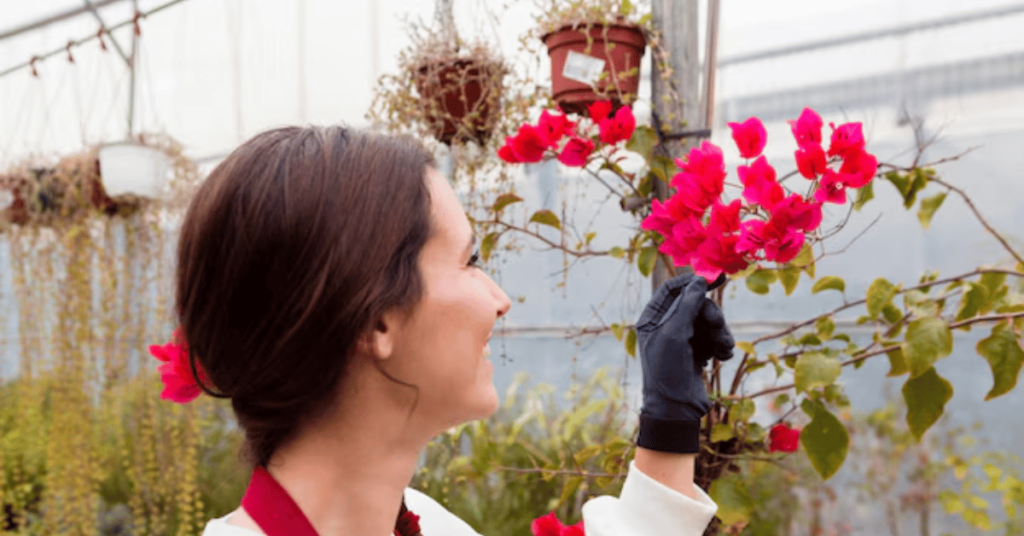Azaleas, known for their vibrant and showy flowers, belong to the Rhododendron genus in the family Ericaceae. With over 10,000 different cultivars, azaleia are some of the most popular ornamental plants around the world. These stunning flowers are native to temperate regions of Asia, Europe, and North America. In this article, we will explore the history, types, growing conditions, care, and popular uses of azaleas.
Introduction to Azaleas
Azaleas have been admired for centuries for their bright, colorful blooms, which range from soft pastels to bold hues like fuchsia, red, purple, and white. They are known for being relatively low-maintenance yet capable of making a huge impact in gardens, yards, and landscapes.
Azaleas typically bloom in the spring, with some varieties flowering as early as February in warmer climates and others blooming in May. Their attractive flowers come in various shapes, sizes, and colors, which makes them suitable for almost any landscape design.
History and Origins of Azaleas
Azaleas have a rich history that dates back thousands of years. They are believed to have originated in Asia, particularly China and Japan. The first documented cultivation of azaleia can be traced back to the 17th century, when the Japanese began to develop and propagate various types of azaleia. Over time, the plant spread to Europe, where it was incorporated into garden designs during the Victorian era.
The name “azalea” comes from the Greek word “azaleos,” meaning dry, which is thought to refer to the plant’s natural habitat in dry, rocky soil. azaleia were introduced to North America in the early 19th century, and since then, they have been widely cultivated across the continent.
Types of Azaleas
There are two main types of azaleas: deciduous azaleia and evergreen azaleas. Each type has unique characteristics, making them suitable for different landscapes and climates.
Deciduous Azaleas
Deciduous azaleas lose their leaves in the fall, making them an excellent choice for regions that experience cold winters. These azaleas typically have larger blooms than their evergreen counterparts and are available in a wide range of colors, including orange, red, pink, yellow, and white. Some of the most popular deciduous azalea varieties include:
- Rhododendron austrinum (Florida Azalea): Known for its bright yellow to orange flowers, this species is native to the southeastern United States.
- Rhododendron calendulaceum (Flame Azalea): Featuring vibrant orange and red blooms, this azalea is found in the Appalachian Mountains.
- Rhododendron periclymenoides (Pinxterbloom Azalea): This species, native to eastern North America, has pink to purple flowers that are fragrant.
Evergreen Azaleas
Evergreen azaleas, on the other hand, retain their leaves throughout the year, making them suitable for warmer climates where cold temperatures are less of a concern. These azaleia are typically smaller in size compared to deciduous types but produce abundant, colorful flowers in shades of white, pink, purple, and red. Some notable evergreen azaleas include:
- Rhododendron simsii (Indian Azalea): Often used as a houseplant, the Indian azalea blooms in a wide range of colors, including pink, red, and white.
- Rhododendron obtusum (Kurume Azalea): A compact variety native to Japan, the Kurume azalea is popular for its small size and vibrant, colorful flowers.
- Rhododendron ‘Girard’s Fuchsia’: Known for its striking pink-red flowers, this variety is a favorite for creating vibrant borders or garden beds.
Hybrid Azaleas
Hybrid azaleas are the result of crossbreeding various species of azaleia to produce plants with desirable traits, such as improved flower color, disease resistance, or growth habit. Some of the most well-known hybrid azaleas include:
- Encore Azaleas: These hybrids are known for their ability to bloom multiple times throughout the year, making them ideal for extending the flowering season.
- Azalea ‘Autumn Twist’: A popular hybrid that features variegated foliage and blooms in shades of lavender and pink.
Growing Conditions for Azaleas
Azaleas are relatively easy to grow, but they do require specific conditions to thrive. Here are some essential factors to consider when planting azaleas:
Soil Requirements
Azaleas prefer well-drained, acidic soil with a pH of 5.0 to 6.0. They do not tolerate alkaline or heavy clay soils, which can lead to root rot and poor growth. To ensure good drainage, amend the soil with organic matter such as peat moss, compost, or pine bark. If your soil is not naturally acidic, you can lower its pH by adding sulfur or specialized azalea fertilizer.
Sunlight Requirements
Azaleas need a balance of sunlight and shade to perform their best. While most azaleas prefer partial shade, especially in hot climates, they still need some direct sunlight to promote healthy growth and flowering. A location with morning sun and afternoon shade is ideal for many azalea varieties. However, in cooler climates, azaleas may tolerate full sun exposure.
Watering
Azaleas have shallow root systems, which means they are prone to drying out quickly. Regular watering is essential, especially during dry spells. However, overwatering can be harmful, as it may cause root rot. Water your azaleas deeply but infrequently, allowing the soil to dry out slightly between waterings. Mulching around the base of the plant can help retain moisture and maintain a stable root temperature.
Temperature
Azaleas generally prefer moderate temperatures. Most species thrive in zones 5 to 9, with some varieties suited to warmer or cooler climates. When planting azaleas, it is important to select a variety that is suited to your local climate. In colder regions, look for cold-hardy deciduous azaleas, while in warmer areas, evergreen azaleas are often the best choice.
Pruning and Maintenance
Pruning is an important part of azalea care, as it helps maintain the shape of the plant and encourages healthy growth. After flowering, you can trim back any dead or diseased branches, but be careful not to cut back too much, as azaleas form their flower buds for the following year shortly after blooming.
Deadheading, or removing spent flowers, is another way to encourage continuous flowering in certain varieties. If you have hybrid azaleas that bloom multiple times a year, such as the Encore series, regular deadheading will keep the plant looking tidy.
Azaleas generally require little to no fertilization once established, but a light application of a balanced fertilizer in early spring can help promote healthy growth and flowering.
Common Azalea Pests and Diseases
While azaleas are generally hardy and resistant to many pests, they can sometimes fall victim to a few common problems. Here are some of the most frequent pests and diseases that affect azaleas:
Pests
- Azalea Lace Bugs: These tiny insects feed on the undersides of azalea leaves, causing them to become stippled and discolored. In severe cases, the leaves may drop prematurely. Regularly inspecting your plants and treating with insecticidal soap can help control lace bugs.
- Aphids: These small, soft-bodied insects suck sap from the plant, causing leaves to curl and become deformed. Aphids can be controlled by spraying the plant with a strong stream of water or using an insecticidal soap.
- Whiteflies: These tiny, white insects are often found on the undersides of leaves. Like aphids, they feed on plant sap and can cause yellowing or wilting of the leaves. Insecticidal soap is usually effective in controlling whiteflies.
Diseases
- Root Rot: Caused by overly wet conditions or poor drainage, root rot can be fatal to azaleas. To prevent this, make sure your soil drains well, and avoid overwatering.
- Powdery Mildew: This fungal disease appears as a white, powdery substance on the leaves, particularly in humid conditions. Proper spacing and good air circulation around your plants can help prevent powdery mildew.
- Phytophthora Blight: This is a waterborne fungal disease that causes wilting, yellowing, and eventually death of the plant. It is most common in poorly drained soil and can spread quickly in wet conditions.
Azaleas in Landscaping and Garden Design
Azaleas are widely used in landscaping due to their attractive flowers, compact growth habits, and ability to add vibrant color to garden beds, borders, and hedges. Their versatility allows them to be planted in various settings, such as:
- Foundation Plantings: Azaleas make excellent foundation plants, adding color and structure to the exterior of homes.
- Hedges and Borders: Azaleas are often used as low-growing hedges or borders, providing year-round interest and creating visual barriers.
- Woodland Gardens: Their preference for partial shade makes azaleas ideal for woodland gardens, where they can thrive under the canopy of trees.
- Container Gardening: For smaller spaces or patios, azaleas can be grown in containers, where they add an eye-catching pop of color.
Conclusion
Azaleas are a timeless choice for gardeners and landscapers due to their striking flowers, low maintenance, and adaptability to various climates. With thousands of varieties to choose from, azaleia can be found in a range of colors and forms, making them an excellent addition to any garden or landscape. By understanding the plant’s growing requirements, pruning needs, and common pests, you can enjoy the beauty of azaleas in your own garden for years to come.
Frequently Asked Questions (FAQs)
- When is the best time to plant azaleas? The best time to plant azaleia is in early spring or fall. Spring planting allows the roots to establish before the heat of summer, while fall planting gives azaleas time to settle in before winter. Avoid planting during the hottest part of summer.
- How often should I water azaleas? Azaleas require regular watering, especially during dry spells. Water deeply but infrequently, allowing the soil to dry out slightly between waterings. Be careful not to overwater, as this can lead to root rot.
- Why are my azalea leaves turning yellow? Yellowing leaves on azaleas can be caused by several factors, including overwatering, poor drainage, or nutrient deficiencies. It could also indicate a fungal infection, such as powdery mildew or root rot. Check for pests or diseases and ensure proper soil drainage.
- Can azaleas grow in full sun? While most azaleas prefer partial shade, some varieties can tolerate full sun, especially in cooler climates. However, in hotter regions, full sun exposure may lead to leaf scorch, so providing some afternoon shade is recommended.
- Do azaleas need pruning? Azaleas benefit from light pruning after they finish flowering. Remove dead or damaged branches and spent flowers to maintain the plant’s shape. Avoid heavy pruning, as this can interfere with the next season’s bloom.
- What is the lifespan of an azalea? Azaleas can live for many years, with some varieties thriving for decades if properly cared for. The lifespan of an azalea depends on factors such as species, growing conditions, and maintenance.







